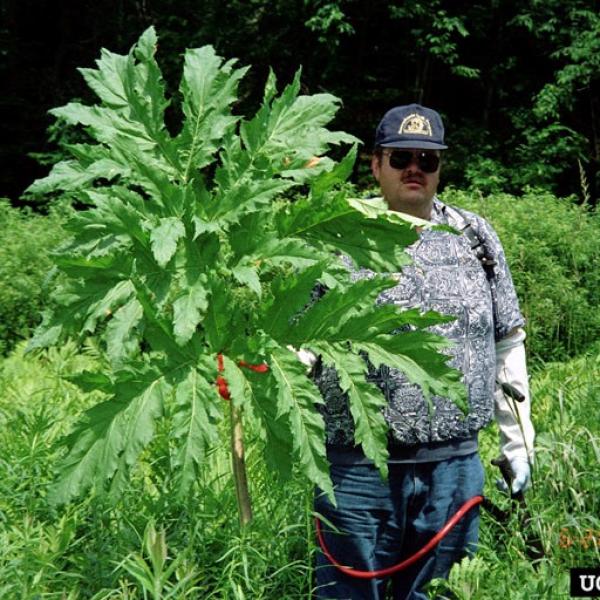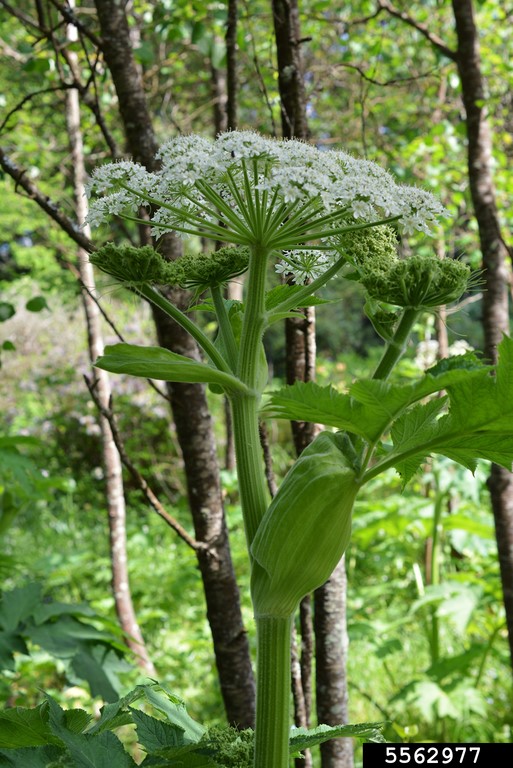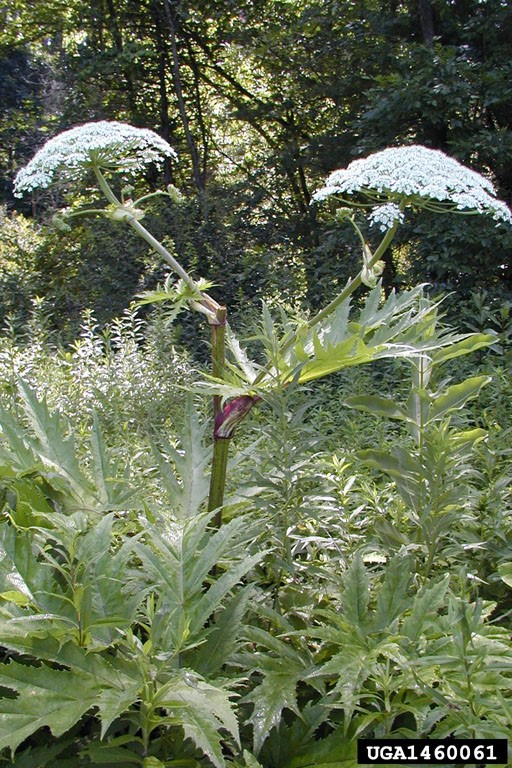
Author: Elizabeth Spinney, Invasive Plant Coordinator, Forest Protection Program, Vermont Department of Forests, Parks & Recreation
Giant hogweed (Heracleum mantegazzianum) is a rare invasive plant in Vermont, but one worth understanding. This invasive plant evolved in the Caucasus region of eastern Europe. Its giant stature enamored collectors in Europe and North America in the 1800s, who planted it as showpieces in Victorian gardens. This plant has been noted growing outside of this range and escaped from cultivation across northern Europe, Canada, United States, Australia, and New Zealand. It easily spreads, produces seeds prolifically, negatively impacts vegetation diversity and soil stability, and poses a serious human health concern.
Exposure to giant hogweed can cause a severe skin rash, triggered by the toxic chemical called furanocoumarin (an organic compound that the plants produce as a line of defense from predators). While related plants (like wild parsnip, wild chervil, or American cow-parsnip) that also contain this chemical in their sap require the plant tissue be broken to encounter the sap, with giant hogweed, just brushing up against this plant can transfer the sap that leads to burns.
Giant hogweed is often confused with a much more common locally-evolved species called American cow-parsnip (Heracleum maximum). American cow-parsnip can become the target of ire by well-meaning people, who mistake its large size as an indication that it is the rare invasive giant hogweed. There are some key differences: giant hogweed is huge – its compound leaves can be up to 5’ across with deep incisions down to the midrib – while American cow-parsnip leaves average 2’ across. An easy way to differentiate them is that American cow-parsnip blooms in the spring, while hogweed blooms in the summer.
Here are a few additional ways to distinguish the local plant, American cow-parsnip from the invasive plant, giant hogweed:
- While both plants have large white flower heads, in profile giant hogweed flowers look like an umbrella, and American cow-parsnip are flat-topped
- Both can reach heights taller than people, but giant hogweed can grow over 14’ in height (about the height of a one-story house)
- Giant hogweed will have coarse white hairs at the base of the leaf stalk, and American cow-parsnip will be hairy, but lack these almost “beard-like” hairs
- The flower head for both plants is made up of individual rays, and giant hogweed will average 50+ rays while American cow-parsnip will average 15-30
Giant hogweed is a federally listed noxious weed and is therefore part of Vermont’s Noxious Weed Rule. With only a handful of locations known across the state, giant hogweed is considered an early detection invasive plant. Those few populations can be found in fields, along waterways, forest openings, and disturbed habitats. If you find locations of this plant anywhere in Vermont, please report them using the Report It! Tool.
To learn more about giant hogweed, check out VTinvasives.org and these additional resources:
- Mistaken Identity? Invasive Plants and their Native Look-Alikes
- New York Invasive Species Information
- CABI
- Department of Environmental Conservation, New York

Flat-topped flower heads of local American cow-parsnip. Photo credit:Shaun Winterton, Aquarium and Pond Plants of the World, Edition 3, USDA APHIS PPQ, Bugwood.org

Umbrella-shaped flower heads of invasive giant hogweed. Photo credit: Donna R. Ellis, University of Connecticut, Bugwood.org.